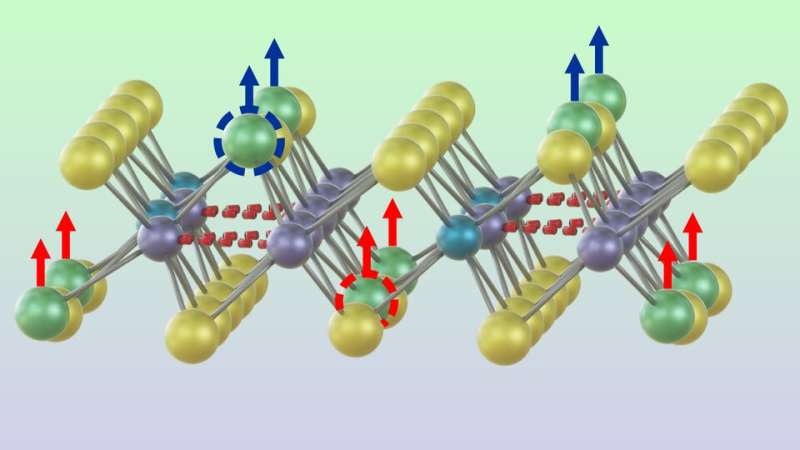Phys.org April 27, 2022
Molybdenum disulfide (MoS2) is known as one of the most promising and robust 2D electronic materials. However, despite theoretical predictions, no ferroelectricity has been experimentally detected in MoS2. An international team of researchers (USA – University of Nebraska, industry, China, France, Luxembourg) has reported the experimental observation of a stable room-temperature out-of-plane polarization ordering in 2D MoS2 layers, where polarization switching is realized by mechanical pressure induced by a tip of a scanning probe microscope. Using this approach, they created the bi-domain polarization states, which exhibit different piezoelectric activity, second harmonic generation, surface potential, and conductivity. Ferroelectric MoS2 belongs to the distorted trigonal structural 1T” phase. Experiments on the flipped flakes reveal that the 1T”-MoS2 samples consist of the monolayers with randomly alternating polarization orientation, which form stable but switchable “antipolar” head-to-head or tail-to-tail dipole configurations. Mechanically written domains are remarkably stable facilitating the application of 1T”-MoS2 in flexible memory and electromechanical devices…read more. Open Access TECHNICAL ARTICLE

A side-view rendering of molybdenum disulfide, a technologically appealing material that consists of two sulfur atoms… Credit: npj 2D Materials and Applications volume 6, Article number: 18 (2022)